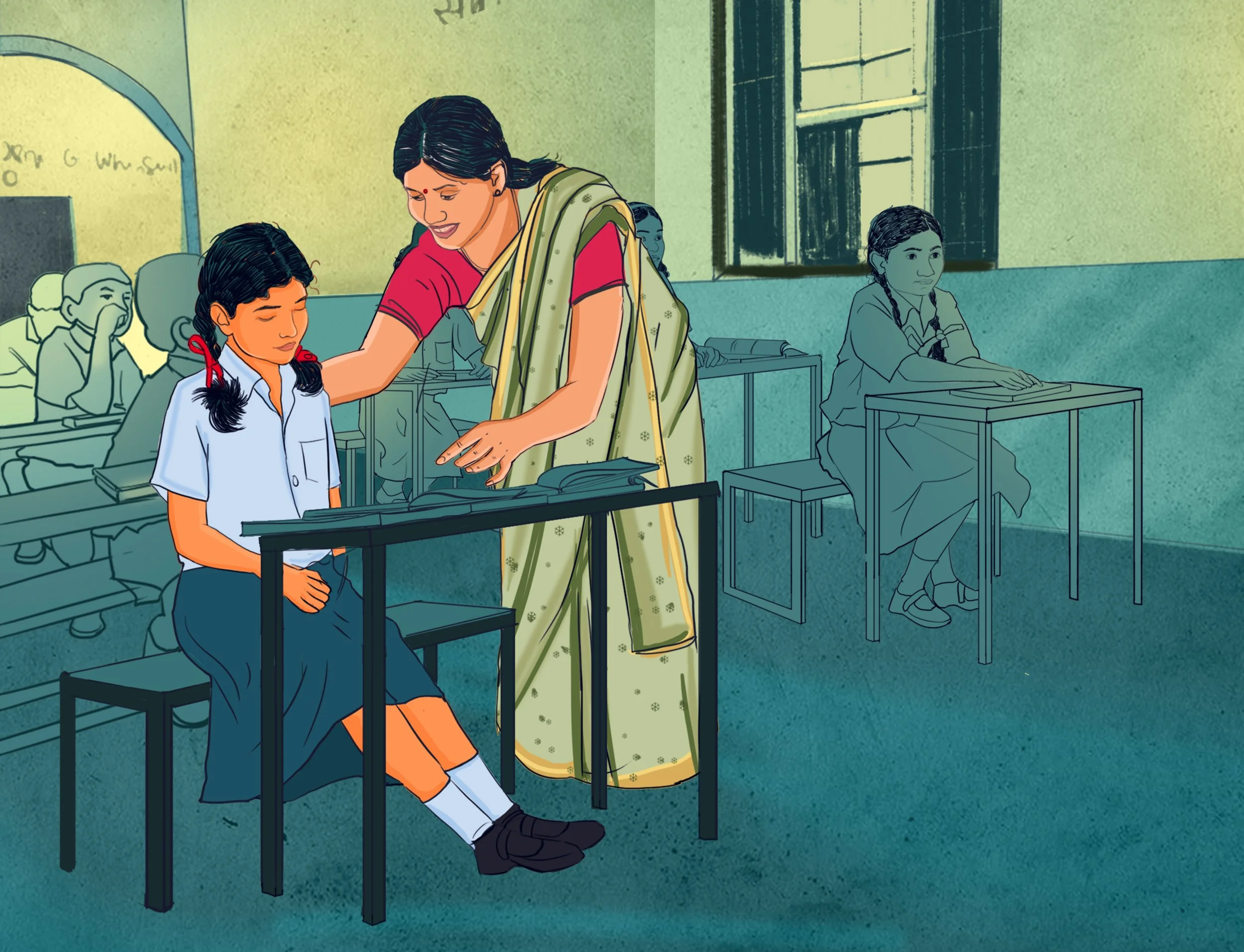Sarees, Stereotypes, and the struggle.
I was 23 years old when I joined the Bachelor of Education program. Since then, I have been facing a question: Why is the field of teaching still confined to the idea of women as culture bearers? Why is it seen as a feminine profession?
I found my answer throughout the course. In my batch of 100 students, 94% were women. Many of my female classmates chose the course because it aligned with family expectations. The male students, fewer in number, always received more attention. At first, I grew frustrated; later, I became used to it.
I was asked to wear a saree that covered my entire body, while male student-teachers were free to wear ripped jeans. I still remember a textbook phrase: “Women make natural teachers because they are patient like mothers.”
It echoed societal values but ignored the burden placed on women to perform unpaid emotional labour. The classroom, the syllabus, the textbooks—everything reinforced the idea that teaching is feminine. This framing confined us to the role of mere culture bearers rather than intellectual leaders.
I cried every night. I grew tired of arguing with male students in my class about their privilege versus our roles. I found myself depressed, surrounded by an environment where gender biases were completely normalised.
“The internship phase, when we taught in schools, brought these gender realities into sharper focus. We were expected to dress modestly to avoid “distractions.” I found myself questioning: Why are women the only ones expected to cover every part of their bodies? Why is this not applicable to men? If children are supposedly distracted by female body parts, what about male body parts? Why was wearing jeans prohibited for women but not for men?”
In theory classes, subjects like Sociology of Education offered glimpses into gender issues. We studied how girls face higher dropout rates due to household chores or early marriage—but rarely discussed gender inequities within our own field. I remember a male classmate mocking our professor by saying, “She should be at home taking care of children.” Female students faced subtle discrimination; they were judged or interrupted more often. Most of them were either unaware of how gender hierarchies could be challenged, or perhaps they didn’t want to confront them.
The internship phase, when we taught in schools, brought these gender realities into sharper focus. We were expected to dress modestly to avoid “distractions.” I found myself questioning: Why are women the only ones expected to cover every part of their bodies? Why is this not applicable to men? If children are supposedly distracted by female body parts, what about male body parts? Why was wearing jeans prohibited for women but not for men?
In my final year, I asked myself: Can teaching be a site for feminist intervention? What if, by modelling equality, women educators could disrupt patriarchal norms? What if we made our classrooms gender-sensitive? What if we turned education into a battleground for gender justice? I asked, but I never got an answer.
Why are women seen as the primary transmitters of cultural norms, values, traditions, and social behaviour? They say teaching is indirectly related to nurturing—a historical role assigned to women. This idea persists because teaching at the primary and secondary levels is framed as an extension of nurturing and moral guidance. Despite the so-called progress in gender equality, the field of teaching remains female-dominated globally.
In my final year, I asked myself: Can teaching be a site for feminist intervention? What if, by modelling equality, women educators could disrupt patriarchal norms? What if we made our classrooms gender-sensitive? What if we turned education into a battleground for gender justice? I asked, but I never got an answer.
About the Author
Arya M Saji (she/her) is a writer passionate about gender equality, inclusive learning, and social change. With a background in teacher education, she draws on personal and academic experiences to question stereotypes and advocate for classrooms that empower every learner.
Thiruvalla, Kerala



